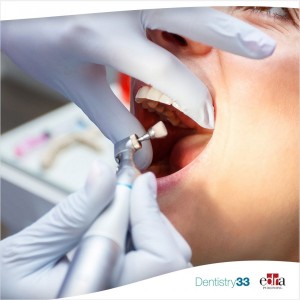
What is the follow up for treatment of endodontic perforations with MTA?
Simona Chirico
Root canal perforations are currently the most common endodontic complications (approximately 12% of failures). These lead to an inflammatory state and loss of attachment in the supporting tissues. If left untreated, perforations cause the tooth to lose its integrity, compromising its prognosis.
Mineral trioxide aggregate (MTA) was the first material to provide predictable healing of root perforations. Previously used materials had a poor prognosis, especially for relatively large perforations, mainly due to poor biocompatibility or insufficient sealing capacity of the material.
MTA, on the other hand, showed excellent biocompatibility and sealing ability, with bioactive properties. Its use for perforation repair has been evaluated in animal laboratory studies and several clinical studies; however, only a few studies have provided data on the long-term prognosis of MTA used to repair perforations.
Materials and methods
The study published in June 2022 in the Journal of Endodontics, conducted by Gorni et al, investigated the prognostic factors and outcome, after 14 years, of elements perforated and treated with MTA.
The study, conducted between 1999 and 2009, enrolled patients with a single dental perforation treated with MTA. Pre-operative, intra-operative and post-operative information were evaluated, and the results were dichotomized as healed or not healed.
Patients were followed up annually through 2018 for up to 17 years after treatment, with follow-ups for up to 14 years. Clinical and radiographic outcomes were evaluated using standardized follow-up protocols.
Results
Researchers enrolled 124 patients (mean age 36.5 years, 53.2% male) in the study. They noted that 115 recovered at their first (n = 110, 89%) or second (n = 5, 4%) annual post-treatment check-up, while nine injuries have not healed.
Characteristics significantly associated with non-healing were gender, positive probing, size, and perforation site.
Perforations presented complications in 48 teeth during follow-up with estimated odds of reversal at five, 10, and 14 years of 6% (95% CI, 2-10%), 30% (95% CI, 20-38%) and 62% (95% CI, 46-73%), respectively.
Positive probing had the highest risk of reversal (HR = 3.3, p ≤0.001) and perforations >3 mm were more likely to fail (HR = 4.1, p <0.001 ).
Conclusions
Root canal perforation treated with MTA shows problems with the increasing of time. In fact, after five years the probability of failure is extremely small (5%) but increases drastically after 14 years (62%). The advantage is that in any case patients can use their teeth for many years, thus postponing the implant surgery.
For more information: "Prognostic Factors and Primary Healing on Root Perforation Repaired with MTA: A 14-year Longitudinal Study."
 Related articles
Related articles
Orthodontics 05 November 2024
This study analyzed and discussed relevant aspects to understand patients with iatrogenic problems and describe a simple and efficient approach to treat complex cases associated with orthodontic...
Endodontics 18 October 2023
How to manage iatrogenic root canal ledges with the support of Come Beam
Successful endodontic treatment is achieved through correct shaping and disinfection of the root canal system, however anatomical variations of the canals, the angle of canal curvature, the radius of...
USA 20 April 2021 - 27 April 2021
Non-surgical and surgical repair of iatrogenic and pathologic perforations
LIVE WEBINAR – ORAL SURGERY – Wednesday, April 21st, 10 AM West Coast – 1 PM East Coast
LIVE WEBINAR – ORAL SURGERY – Wednesday, April 21st, 10 AM West Coast – 1 PM East Coast
No clinical studies have examined the effect of mineral trioxide aggregate (MTA) obturation levels on the outcome of endodontic retreatment. This retrospective study examined treatment outcomes in...
Pediatric dentistry 04 May 2022
The evaluation of MTA and Biodentine as a pulpotomy materials for carious exposure in primary teeth
The aim of the present study was to compare the long term clinical and radiographic success rates of Biodentine and MTA pulpotomies, performed on primary teeth...
 Read more
Read more
Much like EMTs rushing to the scene after an accident, stem cells hurry to the site of a skull fracture to start mending the damage. A new finding has uncovered the signaling mechanism that triggers...
Products 05 November 2025
SimplyTest has launched a groundbreaking saliva-based test to detect high-risk strains of oral human papillomavirus (HPV), a major cause of oropharyngeal cancers.
News 05 November 2025
Perimetrics, Inc., a dental technology company pioneering quantitative diagnostics, announced today that the U.S. Food and Drug Administration (FDA) has granted clearance for the InnerView...
News 05 November 2025
On October 15, open enrollment for Medicare began nationwide. Hundreds of thousands of seniors in New Jersey will once again face the challenge of finding the right Medicare coverage, including the...
Digital Dentistry 04 November 2025
Digitalisation is an expanding field in dentistry and implementation of digital teaching methods in dental education is an essential part of modern education.















